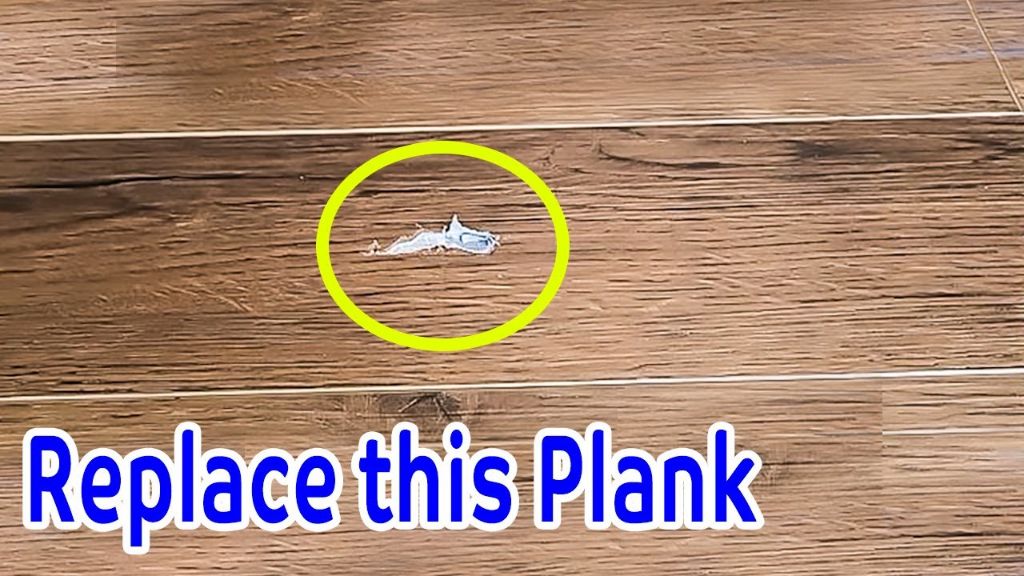Hollow spots or gaps between luxury vinyl planks (LVP) flooring are a common issue that many homeowners face after installation. These gaps are unsightly and can also collect dirt and moisture over time. There are a few potential causes of these gaps and several effective solutions to fill them properly. In this comprehensive guide, we will cover the key reasons hollow spots occur in LVP flooring and the best practices for fixing them.
Page Contents
What Causes Hollow Spots Between LVP Planks?
There are three main culprits that lead to hollow spots between LVP planks after installation:
Improper Installation
The most common reason for gaps between LVP flooring is incorrect installation. If the planks are not properly staggered, snapped together tightly, or spaced with the correct expansion gaps, hollow spots can occur. Rushing the installation or using unskilled laborers often results in imperfect locking of the planks and visible gaps.
Uneven Subfloor
An uneven, damaged, or unsound subfloor will prevent the LVP planks from lying flat and fitting snugly together. Any bumps, cracks, or inconsistencies in the subfloor can transfer to the surface and create gaps between planks. The subfloor must be leveled and prepped properly before LVP installation.
Natural Contraction and Expansion
While less frequent, natural contraction and expansion of the vinyl planks due to temperature and humidity changes can also lead to slight gaps. The planks will expand and contract minutely with the seasons.
How to Fill in Gaps Between LVP Flooring
There are several effective options to fill in hollow spots between LVP flooring planks. The best solution depends on the severity of the gaps, location, and convenience.
LVP Flooring Putty
Using vinyl plank flooring putty is often the easiest and most effective solution. These putties come in neutral colors to match your flooring. Simply push the putty deep into the gaps using a putty knife, let dry completely, and wipe away excess. This provides a permanent fix quickly, without removing planks.
| Product | Price |
|---|---|
| Vinyl Plank Flooring Putty by DAP | $8 |
| Multi-Purpose Floor Gap Filler by Armstrong | $6 |
Vinyl Plank Adhesive
You can also inject vinyl plank flooring adhesive deep into the gaps using the applicator tip. Hold the tube at a 45-degree angle and fill thoroughly. The adhesive dries clear and bonds the planks. This works best for minor gaps under 1/8 inch wide.
| Product | Price |
|---|---|
| Roberts 6700 Vinyl Plank Flooring Adhesive | $9 |
| Loctite Vinyl & Plastic Flexible Adhesive | $6 |
Silicone Caulk
For small gaps, silicone caulk can provide a waterproof seal. It remains somewhat flexible over time. Be sure to use a clear, neutral colored caulk to match the LVP flooring. Completely fill the gap and tool smooth. Allow to fully cure for 24-48 hours.
| Product | Price |
|---|---|
| GE Silicone I Clear Kitchen & Bath Caulk | $4 |
| Gorilla 100% Clear Silicone Sealant Caulk | $5 |
Wood Filler
For wider gaps, a vinyl-safe wood filler can be forced into the seams using a putty knife. It dries hard to create a permanent fill. Sand and paint to match after full curing. Wood fillers will not work for minor gaps under 1/4 inch wide.
| Product | Price |
|---|---|
| Dap Plastic Wood Professional Vinyl Filler | $6 |
| Elmer’s E887Q Stainable Wood Filler | $5 |
Replacing Planks
For severe, recurring gaps it may be necessary to replace affected planks. This involves cutting out the problem planks and installing new ones tightly. Consider professional help for plank replacement to limit damage. Replacing planks can resolve chronic issues caused by damaged locking systems or improper installation.
Tips for Preventing Hollow Spots in LVP Flooring
Preventing hollow spots and gapping in LVP flooring is easier than correcting them. Keep these tips in mind:
- Allow proper acclimation time for planks to adjust to the room’s temperature.
- Ensure the subfloor is completely level before starting installation.
- Use high quality vinyl plank flooring made with durable rigid cores.
- Hire experienced flooring installers for a tight professional fit.
- Maintain normal indoor temperature and humidity year-round.
- Install planks randomly and tightly, locking together firmly.
- Follow manufacturer spacing guidelines for expansion gaps.
Professional Repair for Persistent Hollow Spots
For major gapping issues caused by subfloor imperfections or botched installation, professional repair may be required. This involves lifting planks, leveling the subfloor, reinstalling properly, and potentially replacing damaged planks. Seek quotes from top-rated local flooring contractors. Expect costs of $3-$8 per square foot for spot repair.
Conclusion
Small hollow spots between LVP planks can happen but are easily fixable. For minor gaps, inject vinyl plank putty, adhesive, or silicone. Wider spaces may need wood filler. Severe cases with recurring gaps can be resolved by spot plank replacement. Prevention starts with proper subfloor prep, acclimation, experienced installers, and maintaining stable indoor conditions. Addressing any hollow spots quickly keeps your LVP flooring looking flawless.
